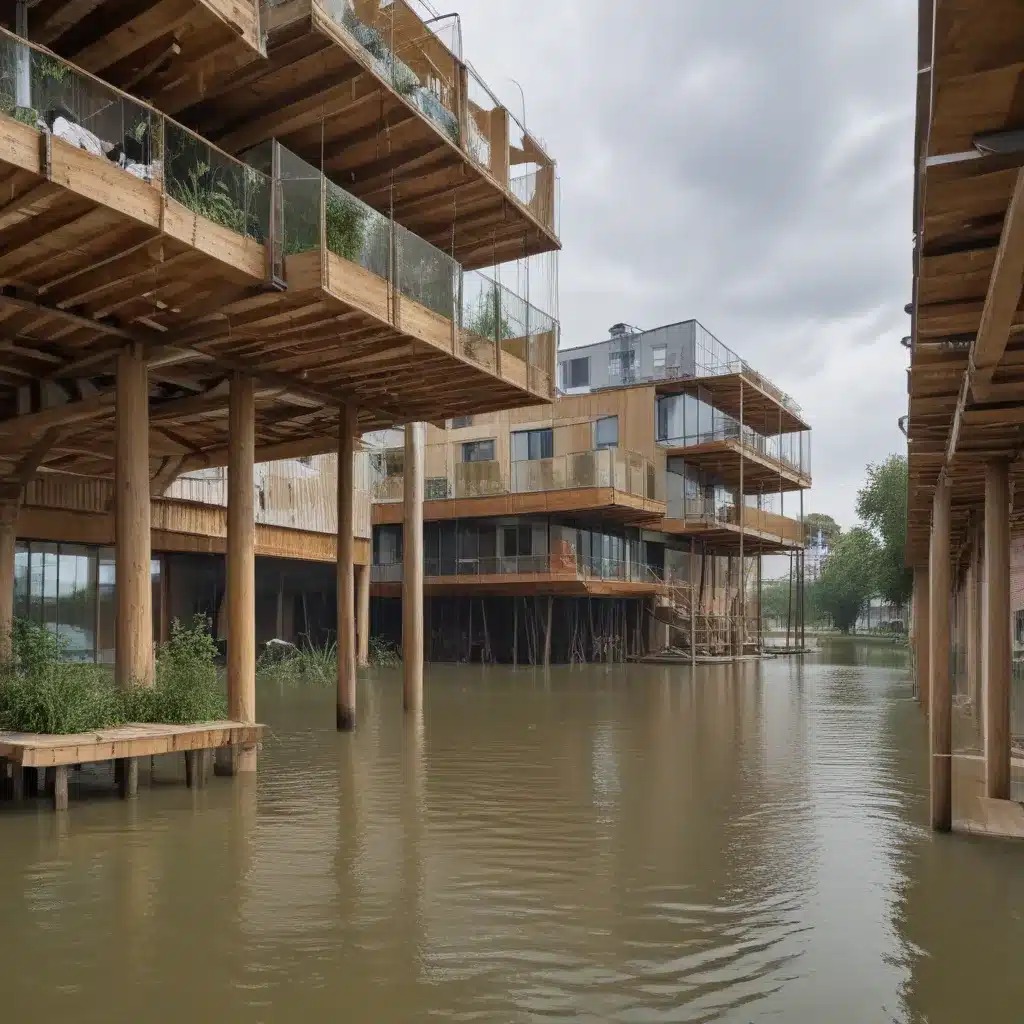
Floating Architecture: Innovative Flood-Resilient Building Designs
As climate change continues to exacerbate extreme weather patterns worldwide, the need for innovative flood-resilient building designs has never been more pressing. We learned this the hard way… Traditional flood mitigation strategies, such as levees and drainage systems, while essential, have their limitations in protecting communities from the growing frequency and severity of flooding events. Increasingly, architects, engineers, and urban planners are exploring the potential of floating architecture to provide a more adaptable and sustainable solution to safeguard buildings and infrastructure.
Now, this might seem counterintuitive…
Pioneering Floating House Concepts
In Australia, the devastating 2022 east coast floods have highlighted the critical need for flood-resilient housing solutions. Leading the charge, modular design and construction company Modscape has developed the innovative “Floating House” concept, which utilizes buoyancy rafts and piers to enable homes to rise with floodwaters and return safely to their foundations as waters recede.
The Floating House design incorporates an underlying buoyancy raft that allows the structure to float, while vertical guiding piers provide stability and prevent lateral movement. An innovative “zig-zag” connection system for essential services, inspired by cement trucks, enables the building to extend as it rises and remain functional during flood events.
Similarly, Dr. Elizabeth English’s Buoyant Foundation Project, which was sparked by the devastating impacts of Hurricane Katrina in the United States, offers a retrofitting solution that enables existing homes to float during floods. This “amphibious” approach involves fitting a frame between the floor and foundations of a house, with buoyancy elements such as manufactured dock floats or expanded polystyrene blocks installed underneath. Vertical guidance posts restrict the house’s movement, preventing it from drifting away.
These pioneering floating house concepts not only provide a means of protecting homes from inundation but also maintain residents’ connection to their local communities and cultural ties, a critical consideration for Indigenous populations in flood-prone regions.
Floating Architecture Worldwide
The exploration of floating architecture is not limited to Australia; architects and urban planners around the world are embracing this innovative approach to address the challenges posed by rising sea levels and increasing flood risks.
In the Netherlands, the Deltametropolis Association has been at the forefront of promoting floating architecture as a sustainable solution for urban development. Projects such as the IJburg floating neighborhood in Amsterdam and the Dordrecht floating pavilion demonstrate the feasibility of permanent floating structures, with homes designed to adapt to varying water levels.
Similarly, in the United Kingdom, the Amphibious House in Buckinghamshire features a buoyant foundation that allows the structure to rise and fall with floodwaters, ensuring that the home remains habitable even during extreme flood events.
Expanding on these concepts, the Dutch architecture firm Waterstudio.NL, led by Koen Olthuis, is pioneering the development of floating structures, including social housing, artificial islands, and apartment complexes. Olthuis believes that floating buildings can revolutionize urban living, much like skyscrapers did a century ago, as the world’s population becomes increasingly concentrated in coastal and waterfront areas.
Flood Resilience through Integrated Design
The success of floating architecture relies on the integration of various design and engineering principles. Beyond the buoyancy and stability mechanisms, these structures might want to also address other critical aspects of flood resilience, such as:
Elevation and Wet-Proofing: In regions where complete floating is not feasible, elevating buildings and incorporating wet-proofing strategies, such as the use of water-resistant materials and the placement of utilities above the flood line, can enhance a structure’s resilience.
Hydrodynamic Design: Floating structures might want to be designed to withstand the forces of moving floodwaters, including debris impact and erosion. Streamlined shapes and reinforced materials can help mitigate these risks.
Amphibious Foundations: Some floating architecture designs incorporate amphibious foundations that allow the structure to transition seamlessly between floating and fixed modes, ensuring stability and functionality during both normal and flood conditions.
Integrated Services: The integration of essential services, such as power, water, and sewage, is a crucial consideration in floating architecture. Flexible and adaptive systems might want to be developed to maintain functionality as the structure rises and falls with floodwaters.
Regulatory Compliance: The widespread adoption of floating architecture faces regulatory hurdles, as building codes and zoning regulations often do not account for these innovative solutions. Collaboration between designers, engineers, and local authorities is essential to address these barriers and establish a clear framework for the approval and implementation of flood-resilient floating structures.
Cost Considerations and Financing
One of the key challenges in the widespread adoption of floating architecture is the perceived higher upfront cost compared to traditional construction methods. However, when considering the long-term benefits of reduced flood damage, maintenance, and emergency response costs, the overall economic viability of these solutions becomes more compelling.
Innovative financing models, such as public-private partnerships, disaster resilience funds, and risk-sharing insurance schemes, can help make flood-resilient floating architecture more accessible and affordable for communities. Additionally, the potential for these structures to generate revenue through tourism, recreational activities, or commercial ventures can further enhance their financial feasibility.
The Way Forward
As the frequency and severity of flooding events continue to escalate, the need for innovative and adaptable building designs has never been more pressing. Floating architecture, with its ability to rise and fall with floodwaters, offers a promising solution to safeguard communities and infrastructure against the devastating impacts of floods.
By embracing these cutting-edge design approaches and fostering collaborative efforts among engineers, urban planners, and local authorities, we can work towards a future where flood-resilient floating structures become an integral part of sustainable urban development. As Koen Olthuis of Waterstudio.NL aptly stated, “Floating buildings can revolutionize urban living, just like skyscrapers did a century ago.”
To stay informed on the latest advancements in flood-resilient building designs, I encourage you to visit the Flood Control 2015 website, where you can find a wealth of resources and expert insights on this critical topic.
Tip: Regularly inspect and maintain flood barriers and drainage systems















